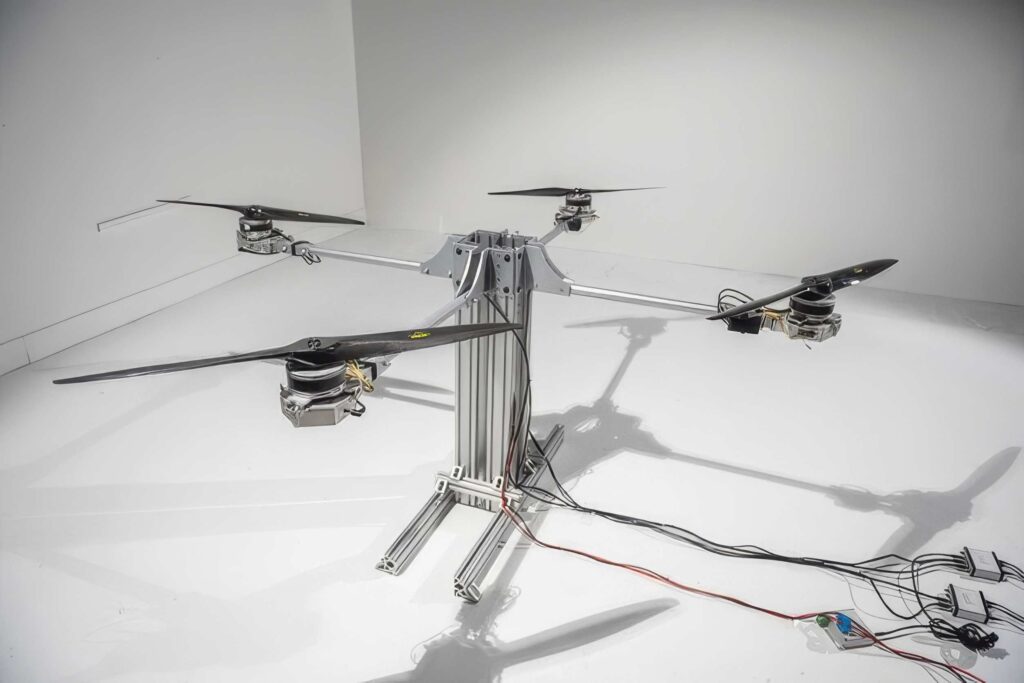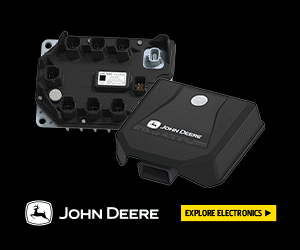Testing distributed electric propulsion

(Image courtesy of Tyto Robotics)
Tyto Robotics has developed a test system for the next generation of electric aircraft that are using distributed electric propulsion (DEP), writes Nick Flaherty. DEP describes a propulsion system whereby the thrust generation is distributed across three or more electrically-powered propulsors. In many DEP designs, the electric propulsors (fans or propellers) are distributed in parallel along an aerodynamic surface, such as the wing of an aircraft.
DEP architectures are evolving and no two DEP aircraft are the same. In a fully electric DEP aircraft, a high-density on-board battery acts as the main power source. The batteries drive multiple electric motors that are each individually connected to a propulsor (a fan or propeller) with aircraft such as the Lilium Jet, NASA’s redesigned X-57 Maxwell, and the Airbus Vahana.
The test system developed by Tyto comes with the hardware, software, and electronics needed to measure the performance of up to eight motors and propellers simultaneously. This is needed to test the various new requirements of DEP designs such as the integration of the propulsors into the lift-producing surfaces of the aircraft, such as the leading edge of the wing, which leads to an aero-propulsive coupling effect.
Boundary layer ingestion (BLI) is an example of this concept, where the propulsors ingest the slower moving air from the boundary layer along the surface of the aircraft. Less energy is required to accelerate this air and it can reduce the total amount of drag produced along that surface, such that fuel efficiency can be increased by up to 8.5%. However, the boundary layer air is much more distorted than free-stream air, so stronger propellers or fans are required to process it.
DEP systems incorporate redundancy on multiple levels, which improves the overall safety of the aircraft. The DEP propulsors may be used to manoeuvre the aircraft, offering a layer of redundancy that can be useful if any of the aircraft’s control surfaces are damaged. The larger number of propulsors means that no individual unit plays a singular role in keeping the aircraft in the air. In a system with eight or 16 propulsors, losing power from one or even a few would not be mission critical.
However, testing the distributed electric propulsion designs also comes with its own set of challenges.
Here the hardware and electronics use a combination of load cells and sensors to measure the propulsion system’s thrust, torque, RPM, voltage, current, temperature, and power. These measurements are used to derive motor and ESC efficiency, propeller efficiency, and overall efficiency for individual powertrains or up to eight powertrains combined.
The testing software allows developers to program tests manually, automatically or with a Python API. There is also a flight replay feature that allows developers to upload flight controller data into the software using throttle points as the template for the test. Each powertrain can be mapped and named so data is easy to trace. With live plots displaying incoming data in real-time, you can quickly determine which propulsors are more or less efficient than others.

ONLINE PARTNERS































